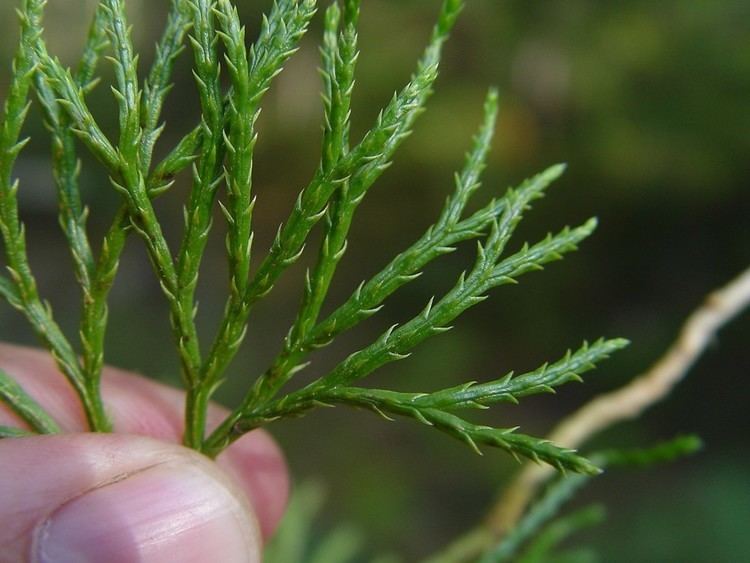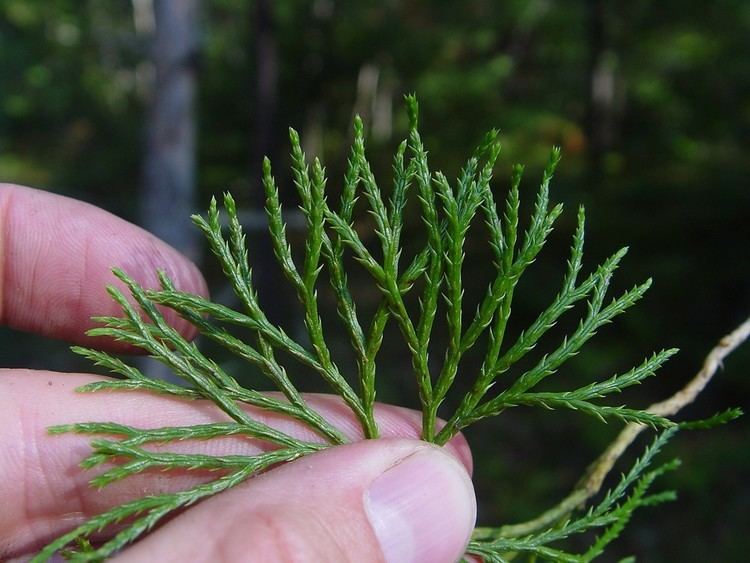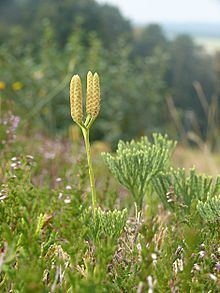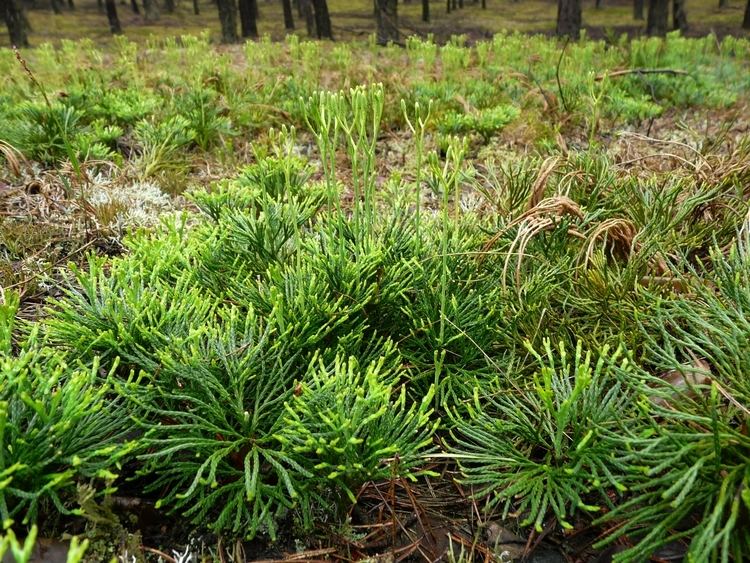Scientific name Diphasiastrum tristachyum Rank Species | Division Lycopodiophyta Genus Diphasiastrum Higher classification Diphasiastrum Order Lycopodiales | |
 | ||
Similar Diphasiastrum, Diphasiastrum complanatum, Lycopodiaceae, Diphasiastrum alpinum, Diphasiastrum zeilleri | ||
Diphasiastrum tristachyum, commonly known as blue clubmoss, blue ground-cedar, ground pine, deep-rooted running-pine or ground cedar, is a North American and Eurasian species of clubmoss. In North America, it has been found from Newfoundland west to Manitoba, and south as far as Georgia and Alabama. In Eurasia, it ranges from southern Norway and Sweden south to France and Italy and it also occurs in the Caucasus.
Contents

The name tristachyum means three branched.
Description

D. tristachyum is a perennial species of clubmoss. It grows from creeping underground stems which are often deeply buried at 5-12cm deep; at nodes from this stem the above ground stems emerge. The upright stems can be 30 cm (12 in) tall or higher. From the main stem, several fan shaped "leaves" emerge, these are not true leaves but rather branched stems which appear to almost look like leaves, each branches 4-6 times. The stems all grow to a similar height at the top of the plant, giving it a flat topped appearance which is a diagnostic character for this species. The peduncle is ~9cm long and often branches twice near the top to form four strobili; the strobili are ~6cm long and 3-4mm in diameter with a rounded tip. The strobili contain the sporophyll which are 2.2-3.5 X 1.6-3mm in size, light yellow, deltoid shaped,with a long sharp pointed tip, the edges are rough and chaffy; the spore case is almost round and the spores themselves are convex on their sides.

The branches are 1-2.2mm wide and square with rounded angles when viewed in cross-section. The blue-green leaves are scale like, four-ranked and lanceolate to subulate. It can be distinguished from similar species by annual constrictions along these branches.

Ground cedar prefers dry and sandy areas with poor soils, this allows it to grow in barrens and other xeric sites. It can tolerate sterile acidic soils which are often found within coniferous forests. Ground cedar also prefers to grow in open areas where other plants are not growing densely. Plants growing in the shade are more diffusely branched than those which grow in bright sun, but branchlets are always more rounded than those of either D. complanatum or D. digitatum.
Hybrids
D. tristachyum forms many hybrids with other species in the Diphasiastrum genus


